The prognosis for biodiversity on Earth is grim. According to a sobering report released by the United Nations last year, 1 million land and marine species across the globe are threatened with extinction – more than at any other period in human history.
According to a recent study, about 20% of the countries in the world risk ecosystem collapse due to the destruction of wildlife and their habitats, a result of human activity in tandem with a warming climate. The United States is the ninth most at risk.
Despite this desperate outlook, the Trump administration, as part of its aggressive rollback of regulations designed to protect the environment, has lifted protections for America’s animals. It has shrunk several national monuments and opened up a huge amount of federal land for oil and gas drilling, coalmining and other industrial activities – actions that conservationists warn could imperil species whose numbers are already dwindling and that are core to the health of our ecosystems.
Here we look at some of the animals most at risk from Trump’s rollbacks.
Wolverines

In 2019, the Trump administration changed the way the Endangered Species Act is applied, making it harder to protect animals. “There are many species that have been wrongly denied protection over the last several years because of this,” says Brett Hartl, government affairs director at the Center for Biological Diversity.
Just last week, the US Fish and Wildlife Service announced it will deny protections for the snow-loving wolverine under the Endangered Species Act. Wolverines were wiped out across most of the country by the early 1900s following unregulated trapping and poisoning campaigns. According to Hartl, they are slowly clawing their way back in some areas but there are presently fewer than 300 wolverines left in the contiguous United States.
Sage grouse
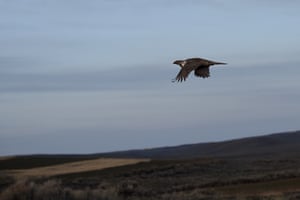
The Trump administration plans to open up drilling on 9m acres of public land in the west, which are the habitat for thegreater sage grouse, a bird known for its mating dance and is considered an “umbrella species” – a bellwether for the health of many other species. Sage – grouse once numbered as high as 16 million across the western United States, but the bird’s populations have plummeted in recent decades.
To accomplish its goal, the Trump administration planned to lift the protected status of the greater sage grouse in order to lease the land for oil and gas drilling, mining and other development projects. This despite the interior department’s research that the impacts of oil and gas on the sage grouse are “universally negative and typically severe“.
In May, a judge put those rollbacks on hold, citing the National Environmental Policy Act (Nepa), a key law that requires federal agencies to assess the environmental impact of planned projects. But in July, Trump gutted Nepa. Conservationists worry the Trump administration will now be able to get away with removing protections for the greater sage grouse – among many other critical species.
Atlantic bluefin tuna

Thanks to overfishing and the continuing demand for bluefin tuna on the lucrative sushi market, the Atlantic bluefin tuna is at a fraction of its historic population.
Earlier this year, the National Marine Fisheries Service passed a rule removing critical longline fishing gear restrictions in specific areas of the Gulf of Mexico during April and May, the bluefin’s peak spawning time. The easing of these protections means vessels can fish for similar yellowfin tuna with longline gear and kill a certain number of bluefin as accidental “bycatch”.
Whooping crane

The endangered whooping crane, the tallest bird in North America, has made an amazing comeback from the brink of extinction since 1940 when only 15 birds survived. Since then, captive breeding programs and reintroduction efforts have boosted their numbers to several hundred.
But that comeback is now threatened. Earlier this year, the Trump administration weakened critical protections in the Migratory Bird Treaty Act (MBTA), a 100-year-old law that protects more than 1,000 bird species, including the whooping crane.
The new stance from the federal government will essentially allow the “incidental” killing of birds via buildings, energy production and other developments that act as avian death traps. A federal court recently struck down the Trump administration’s reinterpretation of the law. Last week, the government announced its intention to appeal.
Monarch butterfly
Human development has eradicated large swaths of the monarch butterfly’s native milkweed habitat. Along with severe weather, this has resulted in a 90% loss in the monarch’s numbers over the last two decades. “They could be wiped out in just a few decades,” Hartl says.
The US Fish and Wildlife Service is currently reviewing the monarch’s designation under the Endangered Species Act. A ruling is expected by December of this year.
But the Trump administration’s changes to the Endangered Species Act threaten efforts to preserve the monarch, which many scientists view as threatened. Listing the monarch butterfly as an “endangered” or “threatened” species could extend it protections from the soybean and corn farmers that compete for its habitat – but changes to the ESA end blanket policies protecting all “threatened” species in favor of individual plans developed for each species on a case-by-case basis.
Black bears
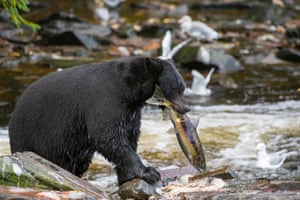
The Trump administration scrapped an Obama-era ban on a series of practices that limited how hunters killed bears and other predators on Alaskan national preserves. In doing so, the administration gave the green light to practices like setting dogs on black bears and killing bear cubs and wolf pups in their dens.
“When you allow widespread hunting of carnivores, that has a huge impact on the entire ecosystem,” Hartl says. The ban aimed at avoiding artificially reducing Alaska’s predator populations in an effort to keep ecosystems in balance.
Bees
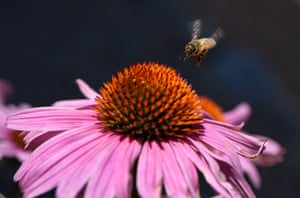
Bees and other pollinators are vital for global food security. But they – and, in turn, our food chain – are under threat. In 2018, the Trump administration weakened regulations on pesticide use in national wildlife refuges, opening the door to increased pesticide use across 150m acres of important pollinator habitat. The decision reverses an Obama-era ban on the use of neonicotinoid, or “neonic”, insecticides as well as genetically engineered crops within refuges.
Neonic insecticides are a leading factor in mass pollinator die-offs worldwide. A report released last year found that US agriculture is 48 times more toxic to insects like bees and other pollinators than it was 20 years ago, largely due to an increased use of neonicotinoid pesticides. What’s worse, according to Hartl, is that the use of such toxic pesticides will harm not only pollinators but birds, fish and other wildlife.
North Atlantic right whale
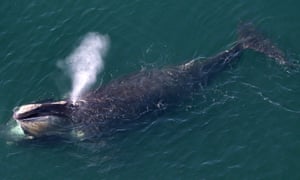
In June, Trump announced that commercial fishing will be allowed in the Northeast Canyons and Seamounts marine national monument off the coast of southern New England. As a result, hundreds of marine mammals that swim in the monument, like the endangered North Atlantic right whale, will be at increased risk of entanglement in fishing gear.
After centuries of commercial whaling, only about 500 North Atlantic right whales remain. Although the imperiled species received protected status in the 1930s, North Atlantic right whales have been slow to recover, in part due to deaths from ship strikes and fishing gear entanglement.
Leatherback turtles/humpback whales
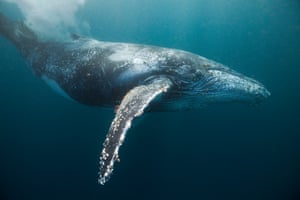
In 2017, the Trump administration withdrew a proposed rule meant to protect whales, turtles and dolphins, including several endangered species among them, from mile-long swordfishing gill nets off the west coast. Fishermen use these nets by hanging them like walls above the seafloor and they often indiscriminately catch whatever flows into them. (Gill net fishing is banned in most of the world’s high seas.)
Death and injuries from entanglement spell trouble for endangered marine creatures such as humpback whales and leatherback turtles that feed off the Pacific coast. In 2016, at least 54 humpback whales were found tangled in fishing gear off the west coast.
